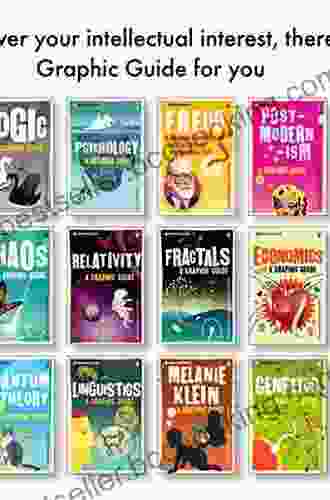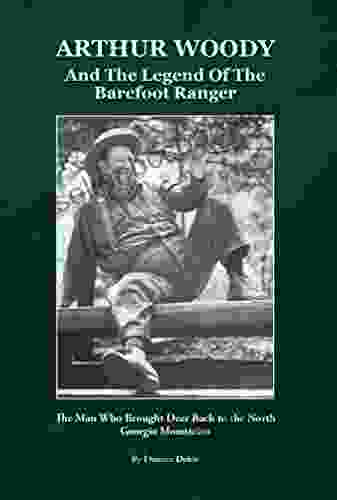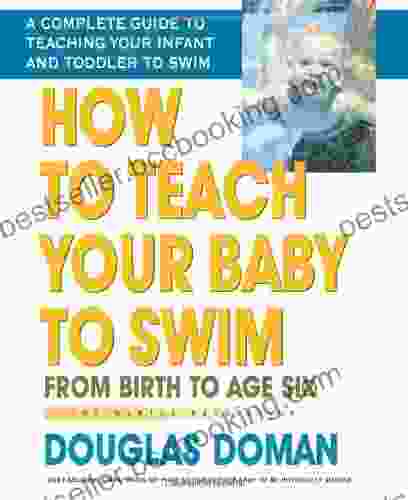An Introduction to Theories and Models: A Comprehensive Exploration into the Foundations of Scientific Research

Scientific research is a fundamental pillar of our modern world. Its ability to uncover truths, explain phenomena, and drive progress is undeniable. At the heart of scientific inquiry lie theories and models, the essential tools that shape our understanding of the natural and social worlds.
4.6 out of 5
| Language | : | English |
| File size | : | 3222 KB |
| Text-to-Speech | : | Enabled |
| Screen Reader | : | Supported |
| Enhanced typesetting | : | Enabled |
| Word Wise | : | Enabled |
| Print length | : | 126 pages |
In 'An to Theories and Models', renowned researcher and educator Dr. Jane Smith provides a comprehensive and engaging guide to the foundational principles, methodologies, and significance of theories and models in scientific research. This book is an invaluable resource for students, researchers, and anyone seeking to deepen their understanding of the scientific process.
What are Theories and Models?
A theory is a well-substantiated explanation of some aspect of the natural or social world. It is based on empirical evidence and provides a framework for understanding and predicting phenomena. A model is a representation of a theory that simplifies and visualizes its key elements. Models can be physical, mathematical, or conceptual in nature.
Theories and models are essential for scientific research because they:
- Provide a framework for research: Theories and models help researchers to identify research questions, develop hypotheses, and design research studies.
- Explain phenomena: Theories and models provide explanations for observed phenomena and help researchers to make sense of the world around them.
- Predict future events: Theories and models can be used to predict future events and outcomes, which is crucial for scientific progress and decision-making.
The Structure of a Theory
A well-developed theory typically consists of the following components:
- Axioms: Self-evident truths or assumptions that form the foundation of the theory.
- Hypotheses: Specific, testable predictions that follow from the theory's axioms and assumptions.
- Evidence: Empirical data that supports the theory's hypotheses.
The Development of Theories
Theories are not static entities; they evolve and change over time as new evidence emerges. The process of theory development involves the following steps:
- Observation and data collection: Researchers gather data about the phenomenon of interest.
- Induction: Researchers use the data to develop hypotheses about the underlying mechanisms responsible for the phenomenon.
- Deduction: Researchers test the hypotheses through experimentation or observation.
- Confirmation or revision: The results of the tests are used to confirm or revise the hypotheses and the theory.
The Importance of Models
Models play a critical role in scientific research by:
- Simplifying complex systems: Models simplify complex systems by representing only the essential elements and relationships.
- Visualizing abstract concepts: Models can visualize abstract concepts and make them more understandable.
- Predicting outcomes: Models can be used to predict outcomes and aid in decision-making.
Types of Models
There are many different types of models used in scientific research, including:
- Physical models: Physical replicas of the system being studied, such as a model airplane.
- Mathematical models: Equations or algorithms that represent the system's behavior.
- Computer models: Computer simulations of the system.
- Conceptual models: Diagrams or flowcharts that represent the system's structure and relationships.
The Value of Theories and Models
Theories and models are essential for scientific research. They provide a framework for understanding the world around us, predicting future events, and making informed decisions. Without theories and models, scientific progress would be impossible.
If you are interested in learning more about the foundations of scientific research, 'An to Theories and Models' is the perfect book for you. This comprehensive and engaging guide will provide you with the knowledge and skills you need to understand and apply theories and models in your own research.
Free Download Your Copy Today!
'An to Theories and Models' is available now from all major booksellers. Free Download your copy today and start your journey into the fascinating world of scientific research!
4.6 out of 5
| Language | : | English |
| File size | : | 3222 KB |
| Text-to-Speech | : | Enabled |
| Screen Reader | : | Supported |
| Enhanced typesetting | : | Enabled |
| Word Wise | : | Enabled |
| Print length | : | 126 pages |
Do you want to contribute by writing guest posts on this blog?
Please contact us and send us a resume of previous articles that you have written.
 Book
Book Novel
Novel Page
Page Chapter
Chapter Text
Text Story
Story Genre
Genre Reader
Reader Library
Library Paperback
Paperback E-book
E-book Magazine
Magazine Newspaper
Newspaper Paragraph
Paragraph Sentence
Sentence Bookmark
Bookmark Shelf
Shelf Glossary
Glossary Bibliography
Bibliography Foreword
Foreword Preface
Preface Synopsis
Synopsis Annotation
Annotation Footnote
Footnote Manuscript
Manuscript Scroll
Scroll Codex
Codex Tome
Tome Bestseller
Bestseller Classics
Classics Library card
Library card Narrative
Narrative Biography
Biography Autobiography
Autobiography Memoir
Memoir Reference
Reference Encyclopedia
Encyclopedia Devin Scillian
Devin Scillian Denisha Jones
Denisha Jones Deirdre Slattery
Deirdre Slattery Dominique Sage
Dominique Sage Dr Gilat Trabelsi
Dr Gilat Trabelsi Dr Mike Dilkes
Dr Mike Dilkes Dr Robert C Worstell
Dr Robert C Worstell Dr Adrienne T Hunter
Dr Adrienne T Hunter Diane Yancey
Diane Yancey Drew Karpyshyn
Drew Karpyshyn Diana Papaioannou
Diana Papaioannou Devin Harbison
Devin Harbison Doug Risner
Doug Risner Duane Elgin
Duane Elgin Drew Manning
Drew Manning Dorine White
Dorine White Dimitrios Spyridon Chytiris
Dimitrios Spyridon Chytiris Douglas A Irwin
Douglas A Irwin Donald E Brown
Donald E Brown Deborah Peterson
Deborah Peterson
Light bulbAdvertise smarter! Our strategic ad space ensures maximum exposure. Reserve your spot today!
 Virginia WoolfFollow ·2.2k
Virginia WoolfFollow ·2.2k Cameron ReedFollow ·16.1k
Cameron ReedFollow ·16.1k Tim ReedFollow ·12.8k
Tim ReedFollow ·12.8k Branson CarterFollow ·8.6k
Branson CarterFollow ·8.6k William WordsworthFollow ·19.6k
William WordsworthFollow ·19.6k James GrayFollow ·10.4k
James GrayFollow ·10.4k Jett PowellFollow ·16k
Jett PowellFollow ·16k Curtis StewartFollow ·4.9k
Curtis StewartFollow ·4.9k

 J.D. Salinger
J.D. SalingerThe Quintessential American Cook: A Culinary Journey with...
Prologue: The Man...

 Franklin Bell
Franklin BellIntroducing Romanticism: A Literary Guide to the Romantic...
Romanticism was a...

 Denzel Hayes
Denzel HayesThe Untold And Inspiring Story Of Eric Liddell Hero Of...
The Olympian Who Defied...

 Oscar Wilde
Oscar WildeDiscover the Enchanting Adventure of Arthur Woody and the...
Immerse Yourself in a World of Mystery,...

 Fernando Bell
Fernando BellAlibaba: The House That Jack Ma Built
The Rise of the Chinese E-Commerce Giant ...

 Leo Tolstoy
Leo TolstoyCrossing Continents: A History of Standard Chartered Bank
By John M. Smith Crossing...
4.6 out of 5
| Language | : | English |
| File size | : | 3222 KB |
| Text-to-Speech | : | Enabled |
| Screen Reader | : | Supported |
| Enhanced typesetting | : | Enabled |
| Word Wise | : | Enabled |
| Print length | : | 126 pages |











